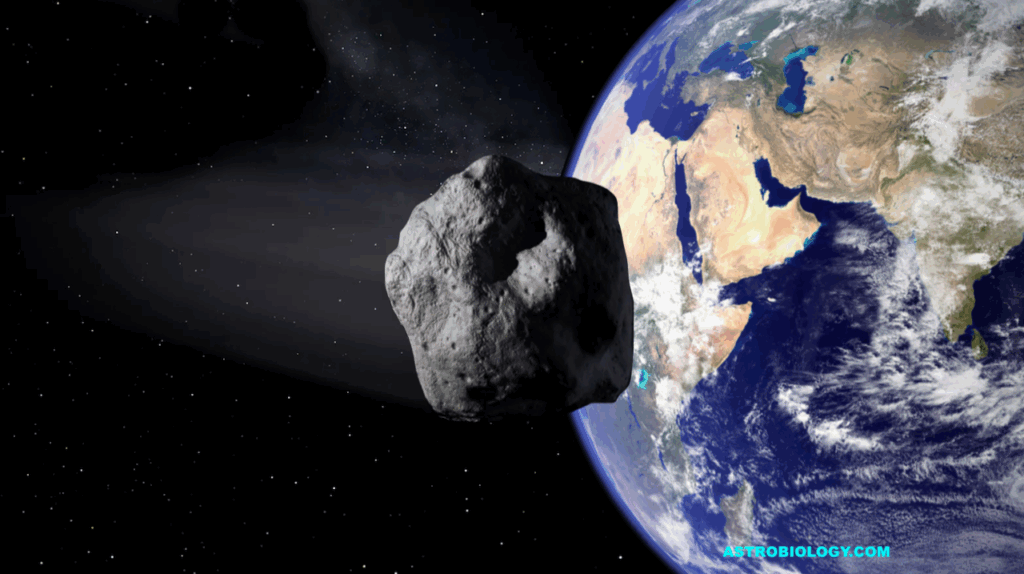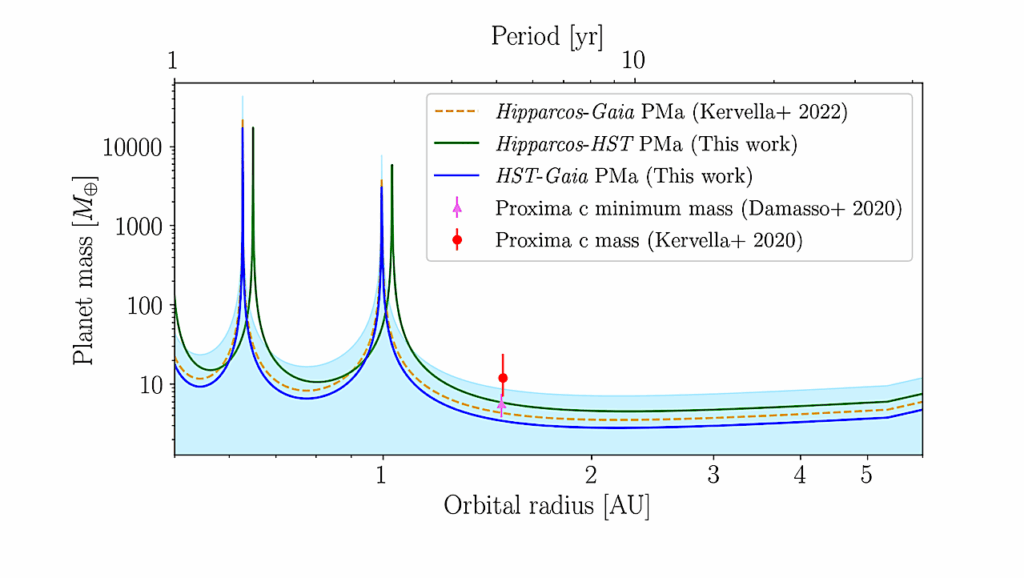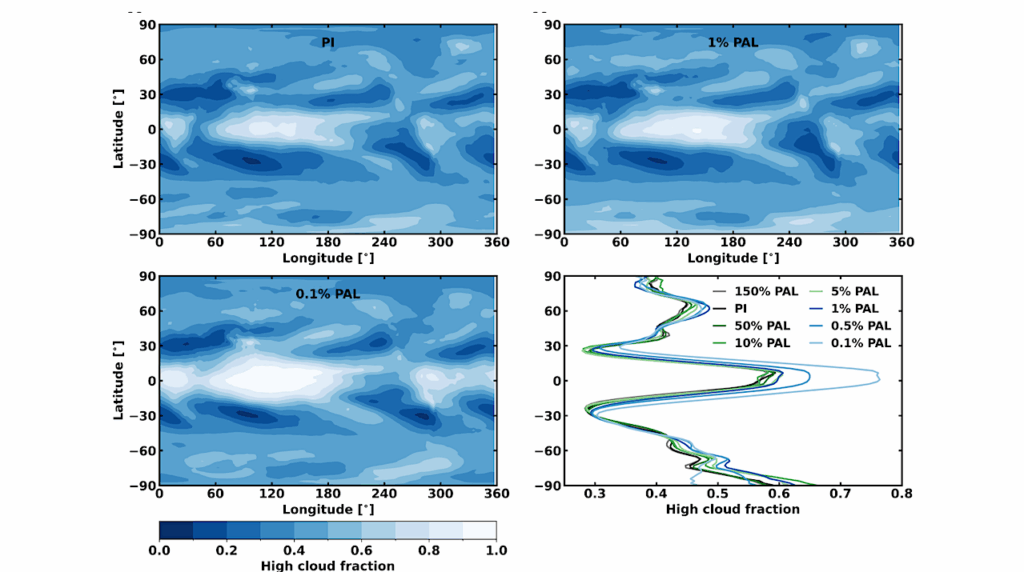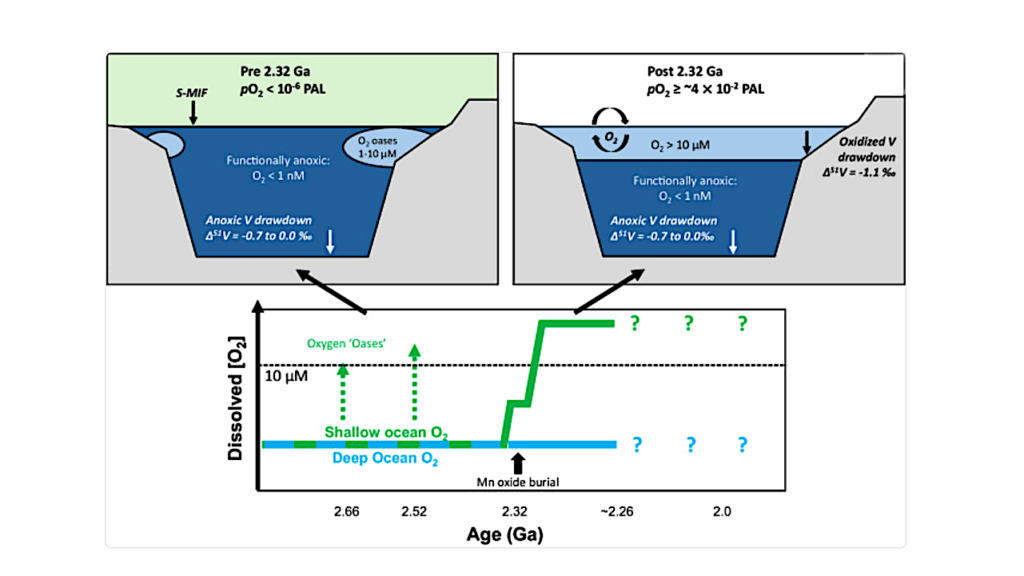Impact of M-dwarf Stellar Wind and Photoevaporation on the Atmospheric Evolution of Small Planets
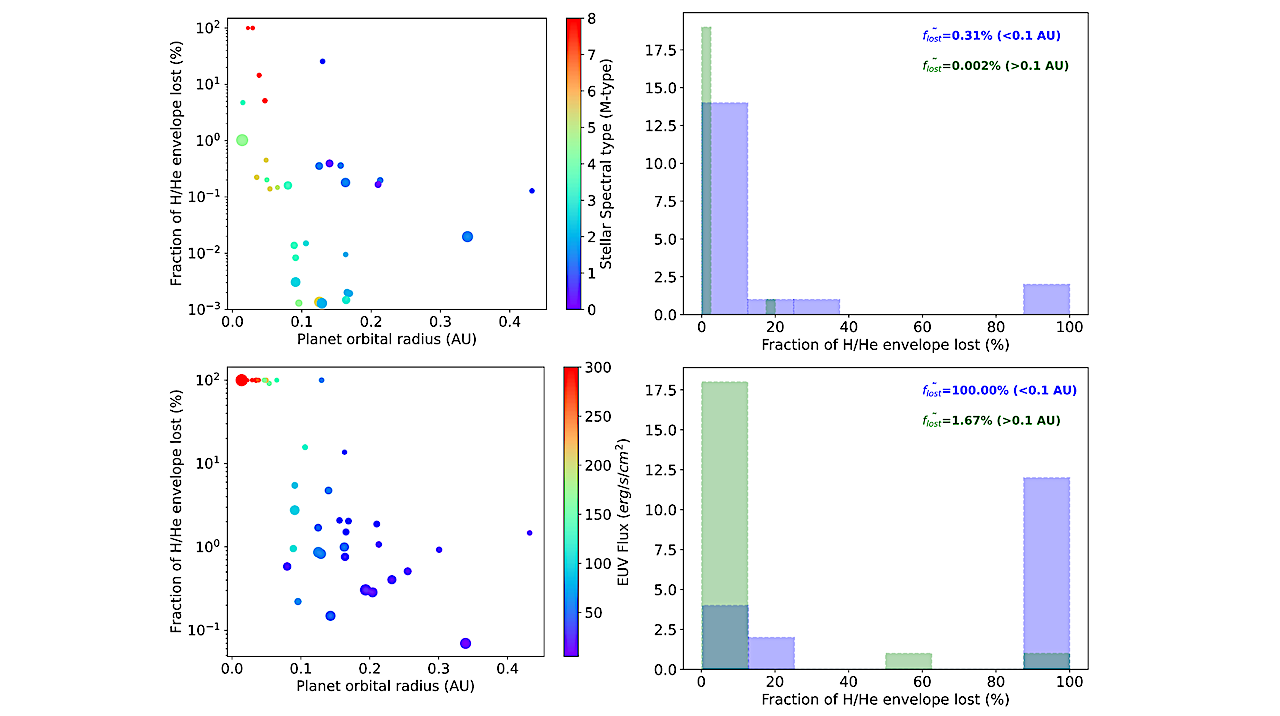
The evolution of a planet’s atmosphere depends strongly on its host star’s properties. When their host stars are younger, planets can experience stronger winds and EUV emissions. This is particularly true for planets orbiting M-dwarfs due to their close proximity to the host star.
To determine if these planets retain an atmosphere, we consider the impacts from stellar wind and EUV fluxes in driving atmospheric escape throughout the planet’s lifetime. For this, we determined the atmospheric mass loss due to stellar wind and photoevaporation on 4 planets in close orbit and 34 in their star’s habitable zone (HZ).
The M-dwarf host stars’ wind velocity, density, and EUV flux were calculated through rotation period and X-ray flux scaling over time. The mass loss rate due to stellar wind and photoevaporation was then computed as a function of time and accumulated throughout the planet’s age to determine the total atmospheric mass loss of the planet’s initial H/He envelope.
We find that for HZ planets at orbits < 0.1 AU, stellar wind can only remove ≤1% of the H/He envelope, while photoevaporation is essential for completely removing the H/He envelope of most targets. Moreover, due to either mechanism, most planets orbiting at > 0.1 AU do not have their primordial envelope stripped.
Overall, out of the 38 planets studied, 13 were predicted to have lost the primordial envelope due to photoevaporation, while 2 planets lost the envelope due to both stellar wind and photoevaporation.
Ashini Modi, Raissa Estrela, Adriana Valio
Comments: 12 pages, 5 figures, published in MNRAS
Subjects: Earth and Planetary Astrophysics (astro-ph.EP)
Cite as: arXiv:2309.10942 [astro-ph.EP](or arXiv:2309.10942v1 [astro-ph.EP] for this version)
Related DOI:
https://doi.org/10.1093/mnras/stad2557
Focus to learn more
Submission history
From: Raissa Estrela
[v1] Tue, 19 Sep 2023 21:51:35 UTC (759 KB)
https://arxiv.org/abs/2309.10942
Astrobiology



